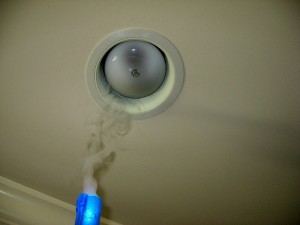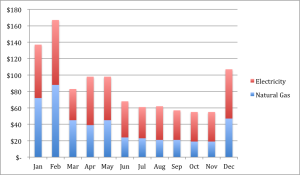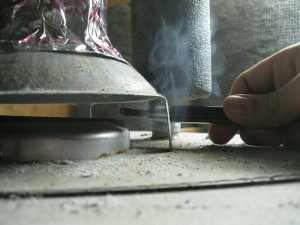June 6, 2018
By David Siddiqui
Introduction to Home Performance
Just like a car or the human body, your house is a system. While it is made up of many different parts, these parts interact with each other to make the whole thing work. A home energy assessment is like a check-up for your whole house, to help you figure out the smartest ways to make your home more comfortable, durable, healthy, valuable, and efficient. Upgrades are typically recommended in order of cost-effectiveness so you can get the most value out of your capital investment. You don’t necessarily need to complete all recommended upgrades at once; the recommendations can serve as a roadmap you can follow over time as allowed by your budget and priorities.
While building performance as an approach to construction has been around for decades, it is still relatively new to many property owners and even many contractors. One of the reasons there are relatively few contractors offering these services is that it requires specialized training and knowledge as well as expertise in a wide variety of trades. Because a building operates as a system, focusing on only one part of a building at a time might result in missing something important in the big picture. If you are trying to reduce your energy bills and you speak to a window contractor, what are they going to sell you? What if you call a heating and cooling contractor instead? What about an insulation contractor? Even many general contractors are not proficient with the more technical aspects of building performance and the principles and practice of heat, air, moisture, and sound transfer that impact how a home performs.
To understand how your home is operating more comprehensively, building performance professionals use building science principles and typically perform diagnostic tests to measure your home’s performance. They will often build a software model of your home to document the existing condition and to estimate the savings from various improvements. This helps identify which upgrades are the most cost-effective and make the most sense for you and your home. After the work is completed, building performance professionals also typically conduct a “test-out”, performing the diagnostic tests again to verify that they reached their targets and achieved measurable results.
Utility Bill Summary
An energy assessment should include an analysis of the property’s utility bills for at least the previous 12 months. The utility bill analysis can provide a useful summary of annual energy costs, a general sense of the opportunity for savings, and clues to particular problem areas based on seasonal consumption patterns.
The winter spikes in both natural gas and electricity in the example chart suggest the gas space heating system is not operating as efficiently as possible. It also may not be operating effectively, as it looks like the occupants may be supplementing it with electric space heating.
Rate structure should also be taken into account. Customers often have a tiered rate structure for electricity and gas, which means that as you use more energy, the price of that energy goes up. When your energy use puts you into higher tiers, efforts to save energy can yield significant cost savings because you save the most expensive energy first, dropping you down into lower tiers where energy is cheaper. Sometimes simply changing rate structure can save you money on utility bills even with no change in energy consumption.
HVAC System
Heating, ventilating, and air conditioning (HVAC) systems provide space heating and/or space cooling that typically accounts for the largest portion of residential energy use. Ignoring the distribution component of these systems for a moment, these systems often have one or more problems including age, inefficiency, improper sizing (usually oversizing), and safety concerns. HVAC systems and the opportunities for savings or safety improvements can vary widely and depend on the specific system and specific installation.
Upgrading the controls, for example to programmable or smart thermostats, can also help these systems operate more efficiently and deliver greater comfort and convenience. New smart home devices continue to enter the market and offer occupants greater control of a variety of home systems.
HVAC Distribution / Duct Systems
HVAC duct systems lead to energy loss in two major ways: convective heat transfer through duct leakage and conductive heat transfer through insufficient duct insulation.
Duct leakage is a major contributor to energy waste and poor indoor air quality. A duct system should act as a closed loop in which no indoor air is lost to the outdoors and no outdoor air is introduced into your home. However in a typical house, approximately 30% of the conditioned air moving through a duct system is lost! Can you imagine going to the gas station and paying to fill up your car’s 15 gallon tank, only to have 5 gallons of it spill onto the ground before you even leave the station? That’s basically what’s happening every time people turn on their heating and air conditioning systems!
Duct insulation is important to preventing heat transfer through the surface area of the ducts as conditioned air travels through them. It needs to be installed consistently to be effective. An insulation level of R-8 is a good target, and in certain cases, ducts can be buried in attic insulation to achieve even greater insulation levels.
Duct layout is another important consideration. They should be configured to distribute conditioned air evenly throughout the home and should include balancing dampers to control the volume of air supplied to each room. This is part of the reason why homes so frequently have inconsistent temperatures and some rooms that are comfortable while other rooms that are not.

Darkened insulation indicates duct leakage, as the fiberglass acts as a filter capturing dust as air flows through it.
Asbestos
Asbestos is a group of naturally occurring mineral silicates. Some of the notable properties of asbestos are resistance to heat, resistance to chemical attack, high tensile strength, and a tendency to be divided lengthwise into fine fibers. Friable (readily crumbled) asbestos is a hazardous material.
Because of the physical properties of asbestos, it was widely used in insulation, ductwork, roofing, flooring, ceilings, and other building materials. Asbestos was also used in the lining of car brakes. Use of asbestos on a large scale began in the early 1900s and continued until it was banned in the late 1970s.
Asbestos should be identified and abated by licensed and trained professionals in accordance with all regulations and best practices.
Air Leakage
Reducing air leakage is often the single most effective step you can take toward a more efficient, healthy, and comfortable home. Minimizing air leakage can reduce energy bills and improve indoor air quality and comfort.
A device called a blower door is used to measure the air leakage in your home using a big fan mounted in an exterior doorway. This can be used in conjunction with a vapor generator to visualize locations of air leakage, of which there are many examples.

Recessed lights can be a source of air leakage if the housings are not rated to be air tight. While the home was under positive pressure from a blower door, this vapor generator revealed a leaky light.
If you don’t have a mechanical ventilation system in your home to bring in outdoor air (most people don’t), you want your air leakage figure to be close to your Building Airflow Standard (BAS), a figure designed to help make sure there’s at least enough air exchange with outdoors to maintain adequate indoor air quality.
For homes with excessive air leakage, building performance professionals conduct air sealing, an improvement that typically involves installing spray foam or other sealing materials in targeted locations like plumbing and electrical penetrations and seams between building components in attics and crawlspaces. While air sealing is often not visually noticeable like a granite countertop, the impact on energy bills and comfort often is noticeable.
Attic Insulation
Attic insulation is a very important part of a comfortable and efficient home. It helps keep your home warm in the winter and cool in the summer.
Different climate zones have different minimum recommended attic insulation levels (R-values). Effective R-value depends on the type and amount of insulating material and the quality of the installation. The R-value of existing insulation can be estimated, and a building performance professional can help you determine the best course of action. Generally, the higher the R-value the better, and it is important to conduct air sealing before insulating because both measures work together.
Also, like water leaking through a hole in a paper cup, heat will transfer through the path of least resistance. Gaps in the insulation can significantly reduce the performance of an attic insulation installation. A particularly common weak point is the attic hatch, which should be both insulated and weatherstripped.
Attics also present a variety of other opportunities to improve building performance, particularly with ventilation, moisture, and proper venting of exhaust fans and combustion appliances to the exterior of the building.

This infrared image shows how a lack of proper attic soffit vent baffling has decreased the performance of the attic insulation
Floor Insulation
Insulating your floors can improve the comfort of your home and reduce your heating and cooling requirements. Uninsulated tile floors can be especially uncomfortable.
Wall Insulation
Because walls account for so much of the surface area between indoors and outdoors, insulating the exterior walls can have a large impact on the energy requirements of the home and can also reduce noise.
Existing wall insulation (or lack thereof) can be determined using thermal imaging with infrared cameras or by probing to the sides of electrical boxes. If your home is on the older side and your walls are currently uninsulated, you can add wall insulation using “drill and fill” techniques either from the interior side or exterior side. That choice depends on the type of siding on your house and other factors.
Windows
Windows are an important part of a well performing building envelope. Windows can be selected for specifications like heat loss, solar heat gain, and visible transmittance. A sophisticated home will have windows with different specifications depending on whether the window faces north, south, east, or west.
While windows are one of the more obvious energy upgrades, the high cost of replacing windows often makes window replacements one of the least cost-effective energy upgrades for your home. There may be better performing windows available than what you currently have with features like low-e coatings and special gases between the panes, and you may have other non-energy-related reasons you want new windows like aesthetics or noise, but it would be wise to consult with a building performance professional about your priorities before replacing windows as a first option.
Water Heating
Water heating can account for a significant amount of energy use in a home and remains relatively consistent throughout the year. This is often referred to as base load.
Measures to help reduce the energy use from water heating range from simply turning down the thermostat to installing low-flow faucet aerators or pipe insulation to installing a high-efficiency water heater. Hot water recirculation systems can also be a major source of energy loss and should be addressed.
The most common types of water heaters are atmospherically vented gas storage water heaters. They are prone to combustion safety issues depending on how they are installed, and replacement should be considered sometime before they reach their average life expectancy of 13 years.
The appropriate water heater temperature setting typically supplies 120ºF water at the furthest faucet.
Appliances
Appliances can account for a large amount of energy waste in a home. You should seek out Energy Star-qualified or otherwise energy efficient products when purchasing new appliances. Most appliances have an energy efficiency rating of some kind that can be used to compare models.
It is worth remembering that Energy Star standards may not be the same for a particular type of appliance over time. For example, an Energy Star-qualified refrigerator from 1998 cannot be assumed to perform as well as an Energy-Star qualified refrigerator from 2018, as the standards get updated along with improvements in technology in order to continue helping to distinguish top performers.
New high-efficiency clothes washers can use both less electricity and less water. No matter what type of clothes washer you have, you can save energy by using a cold-water laundry detergent and washing your clothes in cold water.
Lighting
Upgrading lighting can be a simple and cost-effective way to save energy. Compact fluorescent lamps (CFLs) and light-emitting diodes (LEDs) use significantly less energy than traditional incandescent lamps for the same light output and last significantly longer. They also come in a variety of color temperatures to match your preferences.
Water Use
Reducing water use is important to protecting this precious natural resource and also reduces energy use. Whenever possible, you should choose or upgrade to high efficiency water fixtures such as toilets, showerheads, and faucets.
Combustion Safety
Combustion safety is an important part of a building performance assessment. Gas burning appliances create harmful combustion gases, including carbon monoxide (CO), which is colorless, odorless, and can be deadly. Small pressure differences between different zones of the home have the potential to pull combustion gases back down the flue and into the breathing zone of the home.
It is important to have working carbon monoxide detectors/alarms in your home, however many of these devices may not alert you to lower levels of CO that may not be life threatening in the short term but may be unhealthy over the long term.
Moisture
Excess moisture in the home can worsen indoor air quality, promote the growth of mold and mildew, and diminish the life and durability of building materials. Both bulk water and water vapor can be problematic.
Bathrooms and kitchen ranges should have exhaust fans to exhaust moisture and other contaminants from the home.
Pests
Pests can be a nuisance and cause all sorts of problems in a home. Building performance professionals can identify locations where pests can enter your home and can sometimes uncover evidence of pests like droppings during inspections of attics and crawlspaces.
Everyday Energy Savers
Clean or Replace HVAC Filters
If your HVAC system is trying to circulate air through dirty filters, it works harder and costs you more to heat or cool your home. Change or clean 1″ filters monthly – or at least every three months. Change or clean 4″ pleated filters every 6 months – or as recommended by the manufacturer. Clean filters will make it easier on your heating and cooling system and will even make the air in your home cleaner and healthier for your family. Also, don’t ignore HVAC system maintenance. Servicing your heating and cooling system every one or two years can save energy.
Use Power Strips
Even when they are turned “off”, many products are still using energy. This is called standby power, also known as vampire power or phantom load. Plug all electronic devices that use standby power into power strips or surge protectors, and when not in use, simply flip the switch on each strip to deactivate everything at once. “Smart power strips” automatically turn off the rest of the devices connected to it when one designated device is turned off.
Install Timers
A timer can cut back on energy costs by turning your electrical devices off at a predetermined time. Much like a power strip, a timer can help also help eliminate standby power. Instead of going into a standby mode, your devices are completely powered down when controlled by a timer. If you have a continuously operating hot water recirculation pump, you should plug it into a timer and set it to turn off when you are sleeping and away from your home. This will save energy used to heat the water flowing through the pipes and electricity to run the pump. Exterior lighting and bathroom exhaust fans are also good candidates for timers.
Conclusion
Building performance can seem overwhelming, but a good building performance professional can help you understand how your home is currently operating, make a roadmap of recommended improvements to fit your goals, priorities, and budget, and ultimately make your home more comfortable, durable, healthy, valuable, and efficient. There are a variety of green building certification programs available to building and construction professionals such as the Building Performance Institute. If you have any questions or if there is anything we can do to help, feel free to contact us.





